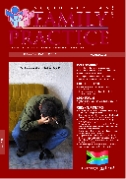Quality Improvement Cycles that Reduced Waiting Times at Tshwane District Hospital Emergency Department
Keywords:
waiting time, quality improvement, district hospital, emergency department.
Abstract
Background: Tshwane District Hospital is a level-one hospital, delivering services in the centre of Pretoria since February 2006. It is unique in location, being only 100m away from the tertiary hospital, Pretoria Academic Hospital. In South Africa, public sector emergency units are under enormous pressure with large patient numbers, understaffing and poor resources. TDH Emergency Department (ED) is a typical example. An average of 3900 patients per month visited this ED in 2006. Recurrent complaints and dissatisfaction shown by the patients, about prolonged waiting times before consulting the medical practitioners in the ED was one of the initial challenges faced by the newly established hospital. It was decided to undertake a quality improvement study to analyse and improve the situation, using waiting time as a measure of improvement. Methods: A quality improvement team was chosen. A total of 150 waiting times of stable and unstable patients were evaluated. There were 50 waiting times for each month; May, September and December 2006. Waiting time was defined as the time from arrival of the patient in the unit until the start of the consultation by the medical practitioner. Surveys were done in May and September to analyse the problems causing prolonged waiting times. The plan of action included instituting a functional triage system, improving the process of up- and down-referrals to and from the tertiary hospital, easy access to stock, reorganisation of doctors’ duty roster, re-organisation of the academic programme, announcement to patients of waiting time, nurses carrying out minor procedures, improvements in the registration, enhancing laboratory delays and availability of protocols. Results: The median waiting times for stable patients were; May 2006: 545 minutes, September 2006: 230 minutes and in December 2006: 89 minutes. There was a significant difference among these waiting times for May, September and December 2006 (p < 0.000; Kruskal-Wallis test). The median waiting times for unstable patients were; May 2006: zero minutes, September 2006: zero minutes and in December 2006: 0.5 minutes. There was no difference among the waiting times of unstable patients for May, September and December 2006 (p=0.906; Kruskal-Wallis test). Conclusion: This quality improvement exercise identified and rectified problems causing prolonged waiting time for stable patients in the Emergency Department. This was done without compromising the time taken to see unstable patients. Similar strategies might be used in other hospitals to reduce the waiting time.
Published
2008-09-02
Section
Original Research
By submitting manuscripts to SAFP, authors of original articles are assigning copyright to the South African Academy of Family Physicians. Copyright of review articles are assigned to the Publisher, Medpharm Publications (Pty) Ltd, unless otherwise specified. Authors may use their own work after publication without written permission, provided they acknowledge the original source. Individuals and academic institutions may freely copy and distribute articles published in SAFP for educational and research purposes without obtaining permission.

